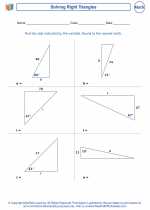The Pythagorean Theorem -> angle
Angles
An angle is the figure formed by two rays, called the sides of the angle, sharing a common endpoint called the vertex of the angle.
Types of Angles
There are several types of angles:
- Acute Angle: An angle less than 90 degrees.
- Right Angle: An angle that is exactly 90 degrees.
- Obtuse Angle: An angle between 90 and 180 degrees.
- Straight Angle: An angle that is exactly 180 degrees.
- Reflex Angle: An angle between 180 and 360 degrees.
Angle Measurement
Angles can be measured in degrees. A full circle is 360 degrees, so any angle can be measured as a fraction of 360 degrees. For example, a right angle is 90 degrees, which is 1/4 of a full circle.
Complementary and Supplementary Angles
Two angles are called complementary if the sum of their measures is 90 degrees. They are called supplementary if the sum of their measures is 180 degrees.
Angle Pairs
Vertical angles are opposite angles formed by the intersection of two lines. They are equal in measure. Adjacent angles share a common side and vertex, but do not overlap.
Angle Relationships
Angles in a straight line add up to 180 degrees. Angles around a point add up to 360 degrees.
Practice Problems
1. Find the complement of a 40-degree angle.
2. If angle A is 30 degrees and angle B is 150 degrees, are they complementary?
3. If angle X is 120 degrees, what is the measure of the angle that forms a straight line with angle X?
Remember to practice drawing and measuring angles using a protractor to reinforce your understanding of this topic!
.◂Math Worksheets and Study Guides Seventh Grade. The Pythagorean Theorem
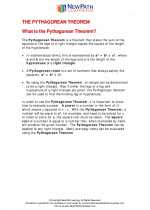
 Study Guide
Study Guide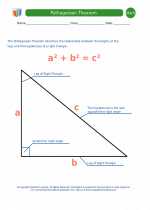
 Worksheet/Answer key
Worksheet/Answer key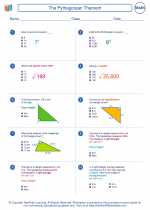
 Worksheet/Answer key
Worksheet/Answer key
 Worksheet/Answer key
Worksheet/Answer key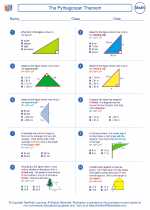
 Worksheet/Answer key
Worksheet/Answer key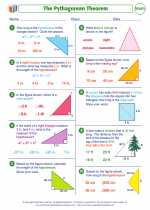
 Worksheet/Answer key
Worksheet/Answer key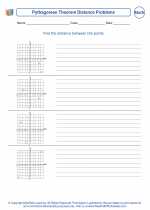
 Worksheet/Answer key
Worksheet/Answer key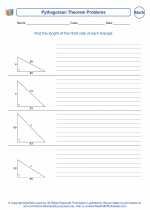
 Worksheet/Answer key
Worksheet/Answer key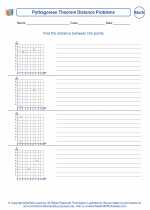
 Worksheet/Answer key
Worksheet/Answer key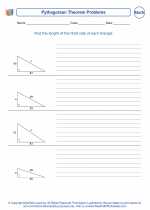
 Worksheet/Answer key
Worksheet/Answer key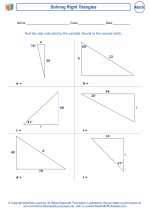
 Worksheet/Answer key
Worksheet/Answer key